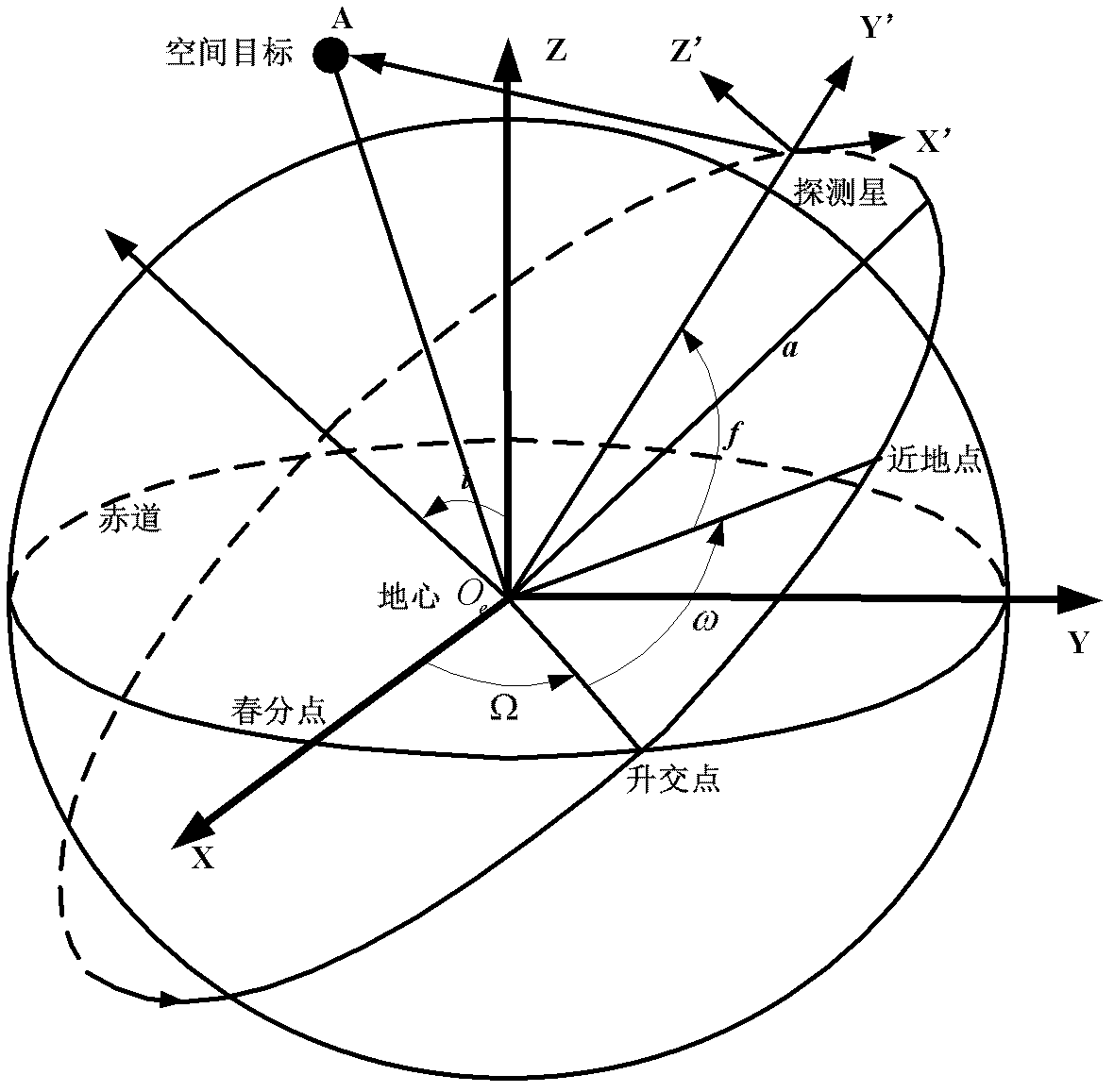Space-based phased-array radar space multi-target orbit determination method
A phased array radar, multi-target technology, applied in the field of signal processing, can solve the problems of poor angle measurement accuracy and low signal-to-noise ratio
- Summary
- Abstract
- Description
- Claims
- Application Information
AI Technical Summary
Problems solved by technology
Method used
Image
Examples
Embodiment Construction
[0039] The working scene graph used in the present invention is as figure 2 As shown, the phased array radar uses the detection star as the platform, and the array is arranged on the Y'O'Z' plane, and its structure is as follows image 3 shown.
[0040] according to image 3 The signal model is established, and the echo data x(t) of each array element at time t is obtained as:
[0041] x(t)=As(t)+n(t), 1)
[0042] in P is the target number, θ k and are the elevation angle and azimuth angle of the kth target respectively, k=1,..., P, is the steering vector of the kth target, N represents the number of array elements, T represents transposition, s(t)=[s 1 (t)s 2 (t)...s P (t)] T is the signal envelope, n(t)=[n 1 (t), n 2 (t),...,n N (t)] T is the noise vector.
[0043] refer to figure 1 , the present invention is based on the above-mentioned signal model, that is, the echo data x(t) of each array element at time t, a proposed space-based phased array radar or...
PUM
 Login to View More
Login to View More Abstract
Description
Claims
Application Information
 Login to View More
Login to View More - R&D
- Intellectual Property
- Life Sciences
- Materials
- Tech Scout
- Unparalleled Data Quality
- Higher Quality Content
- 60% Fewer Hallucinations
Browse by: Latest US Patents, China's latest patents, Technical Efficacy Thesaurus, Application Domain, Technology Topic, Popular Technical Reports.
© 2025 PatSnap. All rights reserved.Legal|Privacy policy|Modern Slavery Act Transparency Statement|Sitemap|About US| Contact US: help@patsnap.com



